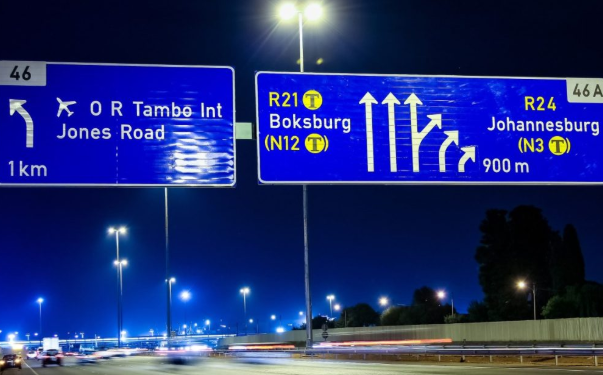Navigating South African toll roads can be daunting for first-time drivers, but understanding how they work can save you time, money, and stress. These roads are a vital part of the country’s transportation network, connecting major cities and facilitating smoother travel. This guide provides a comprehensive overview of toll roads in South Africa, including practical tips to make your journey seamless.
1. What Are Toll Roads?
Toll roads are highways or bridges where users are required to pay a fee to access and use them. In South Africa, these roads are managed by SANRAL (South African National Roads Agency) and private concessionaires. The collected toll fees are used for road maintenance and upgrades, ensuring a better driving experience.
Key Features of South African Toll Roads:
- Electronic Tolling (e-tolls): Common in Gauteng, this system allows cashless payments via e-tags.
- Traditional Toll Booths: Found on major highways, these accept cash and card payments.
- Well-Maintained Roads: Toll roads are generally in excellent condition, making them a preferred choice for long-distance travel.
2. Planning Your Route on Toll Roads
Efficient planning can help you avoid unnecessary toll costs or delays.
- Use Navigation Apps: Platforms like Google Maps or Waze can provide toll estimates and alternative routes.
- Check Toll Rates: Visit SANRAL’s website for updated toll tariffs.
- Factor Costs into Your Budget: Ensure you’re prepared for the toll fees when planning your trip.
3. How to Pay for Toll Roads
Paying for toll roads in South Africa is straightforward, with multiple payment options available:
- e-tags: Recommended for frequent travelers, e-tags enable automatic payment and allow access to dedicated e-toll lanes.
- Cash: Available at most toll booths; ensure you have smaller denominations.
- Cards: Credit and debit cards are accepted at many toll plazas.
For more tips on navigating South African roads, visit iMoto News.
4. Benefits of Using Toll Roads
Although toll roads come with a cost, they offer several advantages:
- Reduced Travel Time: Toll roads are less congested, ensuring faster commutes.
- Enhanced Safety: These roads are well-lit, monitored, and regularly maintained.
- Convenience: Clear signage and rest stops along the way make long-distance travel easier.
5. Tips for Driving on Toll Roads
To ensure a smooth experience on South African toll roads, consider the following:
- Keep Emergency Numbers Handy: Save SANRAL’s emergency helpline for assistance.
- Check Your Vehicle: Before embarking on long trips, ensure your car is in good condition. For reliable second-hand vehicles suitable for these trips, check out Auto24.
- Stay Within Speed Limits: Avoid fines by adhering to posted speed limits.
- Carry Change: Although cashless options are growing, having spare change is always helpful.
6. Challenges and Alternatives
While toll roads are convenient, they may not always suit every traveler.
Common Challenges:
- High Costs: Frequent toll use can add up.
- Limited Access in Rural Areas: Some regions lack toll roads, requiring alternative routes.
Alternatives:
- Explore Scenic Routes: While they may take longer, these routes can be more budget-friendly.
- Public Transport: Options like buses or taxis are available for intercity travel.
7. The Future of Toll Roads in South Africa
As South Africa continues to invest in infrastructure, toll roads are expected to evolve:
- Smart Road Technology: Integration of AI and IoT for real-time traffic updates.
- Expanded Networks: More toll roads may be introduced to connect remote areas.
- Eco-Friendly Initiatives: Emphasis on reducing environmental impact with green technologies.
Conclusion
Understanding South Africa’s toll roads is essential for stress-free travel. By planning ahead, knowing your payment options, and staying informed, you can enjoy the benefits of these well-maintained highways. For more insights on navigating South African roads, visit iMoto News, and to find a vehicle perfect for long-distance travel, explore Auto24.





